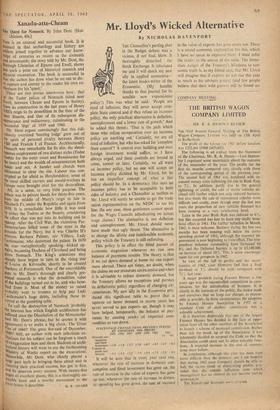Xanadu–atte–Cheam
The Quest for Nonsuch. By John Dent. (Hut- chinSon, 40s.) This is an unusual and successful book. It is Unusual in that archaeology and history are seldom joined together to advance our know- ledge of centuries as recent as the sixteenth and seventeenth; the story told by Mr. Dent, the Borough Librarian of Epsom and Ewell, shows lust such a joint use of historical research and physical excavation. The book is successful in that the author has done what he set out to do: to capture and convey to the reader his own en- thusiasm for his 'quest.' There are two stories interwoven here : that dwell,l)1 the Tudor palace of Nonsuch (sited near between Cheam and Epsom in Surrey), from its construction in the last years of Henry V, 111's reign to its demolition in the time of the later Stuarts, and that of its subsequent dis- appearance and rediscovery, culminating in the successful 'digs' of 1959 and 1960. Mr. Dent argues convincingly that this ridi- culously oversized 'hunting lodge' grew out of ,lhe spirit of personal rivalry between Henry, '1111 and Francis I of France. Architecturally, Nonsuch was remarkable for its size, the simul- taneous employment of two distinct styles (Tudor Gothic for the outer court and Renaissance for the inner) and the wealth of ornamentation both Inside and out. A hamlet and church were obliterated to clear the site. tabour was con- scripted as far afield as Herefordshire; some of the most skilled carvers and mould-workers in Europe were brought over for the decorations. All, in a sense, to very little purpose. The palace was in private hands for thirty-five years, hem the middle of Mary's reign to late in tizabeth l's, under the Republic and again from 1670. It is remarkable how little it was used by either the Tudors or the Stuarts, considering the effort that was put into its building and its I1Pkeep. After the Civil War, the victorious Par- liamentarians felled some of the trees in the grounds for the Navy, but it was Charles ll's Mistress Barbara Palmer, née Villiers, Lady Castlemaine, who destroyed the palace. In 1670 the was—metaphorically speaking—kicked up- stairs, becoming Duchess of Cleveland and being given Nonsuch. The King's attentions may already have begun to turn to the rising star (,),I Louise de Kdroualle, shortly to be created Duchess of Portsmouth. One of the unavoidable taps in Mr. Dent's thorough and clearly pre- tented research is what the demolition value Of the buildings turned out to be, and who bene- fited from it. Most of the money so raised Probably went to trustees to help pay Lady Castlemaine's huge debts, including those in- curred at the gambling table. To call the destruction of Nonsuch 'probably the heaviest loss which English architecture has suffered since the Dissolution of the Monasteries' (not Mr. Dent's phrase, but he quotes it with agreement) is to make a big claim. The Great , Ire of 1666? The great fire-raid of December, 9407 Still, an author with such infectious en- thusiasm for his subject can be forgiven a touch 'II exaggeration here and there. Students of archi- eVural history will want to use the forthcoming Ministry of Works report on the excavations. 'leanwhile, Mr. Dent, who clearly played a i „arge part both in bringing these about and in `usuring their practical success, has got in first, and he deserves every success. With twenty-five rages of excellent plates, this is a thoroughly en- „1°Yable book and a worthy monument to the


































 Previous page
Previous page